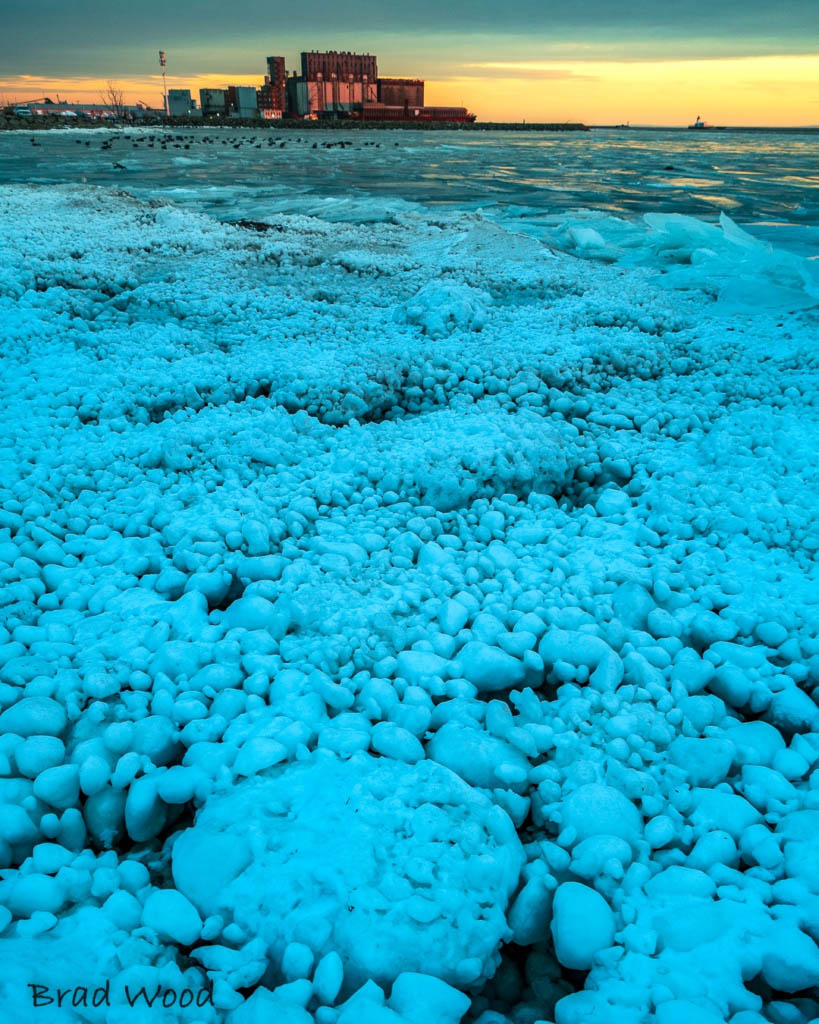Ice eggs, also known as ice balls, are a rare phenomenon caused by a process in which small pieces of sea ice in open water are rolled over by wind and currents and grow into spherical pieces of ice in freezing conditions. They may collect into heaps of balls or ‘eggs’ on beaches.
A gentle churn of water, blown by a stiff enough breeze, forms concentric layers of ice on a seed particle, which then grows into the floating ball as it rolls through the freezing currents.
With enough time, the frozen balls can grow to the size of boulders. Giant snowballs washed up on a Siberian beach in 2016, some measuring a metre (about 3 feet) across.
According to a Finnish Meteorological Institute ice specialist, ice balls are rare but not unprecedented, occurring about once a year on the Finnish coastline as conditions allow.
They can also be found in the Great Lakes, where they are known as Ice balls.
Brad Wood took the above photo recently along the shores of Lake Erie in Gravely Bay. According to Brad, this ice cobble beach formed after the ice from the Christmas Storm (2022) receded. When ice chunks are rolled along the shoreline by wave action, they form ice balls that are round and smooth. They form in the same way that rocks tumble round, but due to the soft nature of the ice, they may form much faster. The ice cobbles were most likely formed by the violent action of the December 2022 storm waves, and melting phases since then have made them more visible.
Thanks to Brad Wood for his contribution both in description and photo.
Follow Brad on Facebook.







